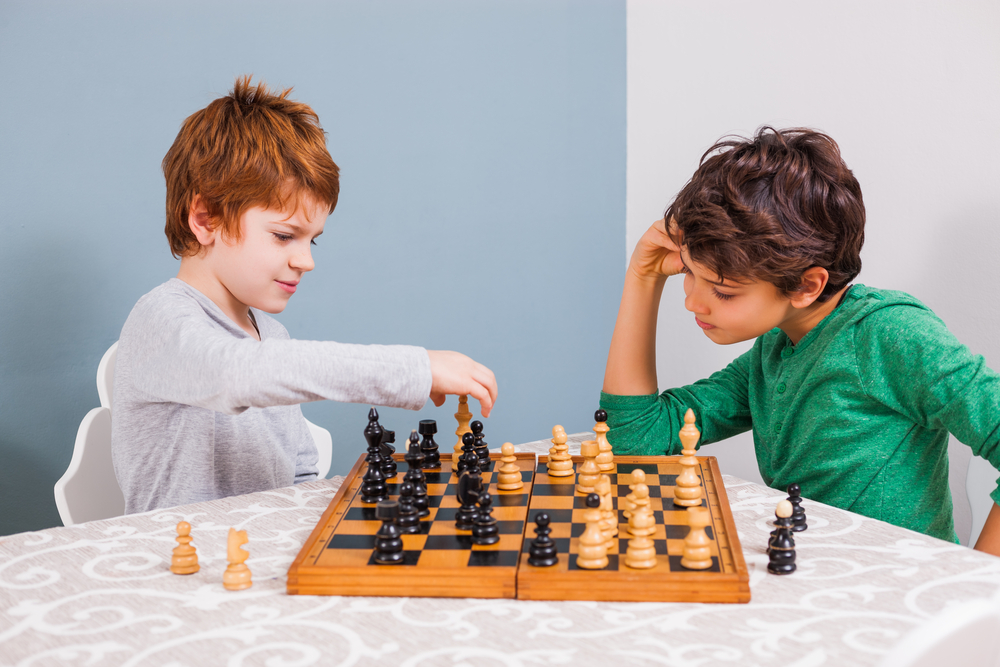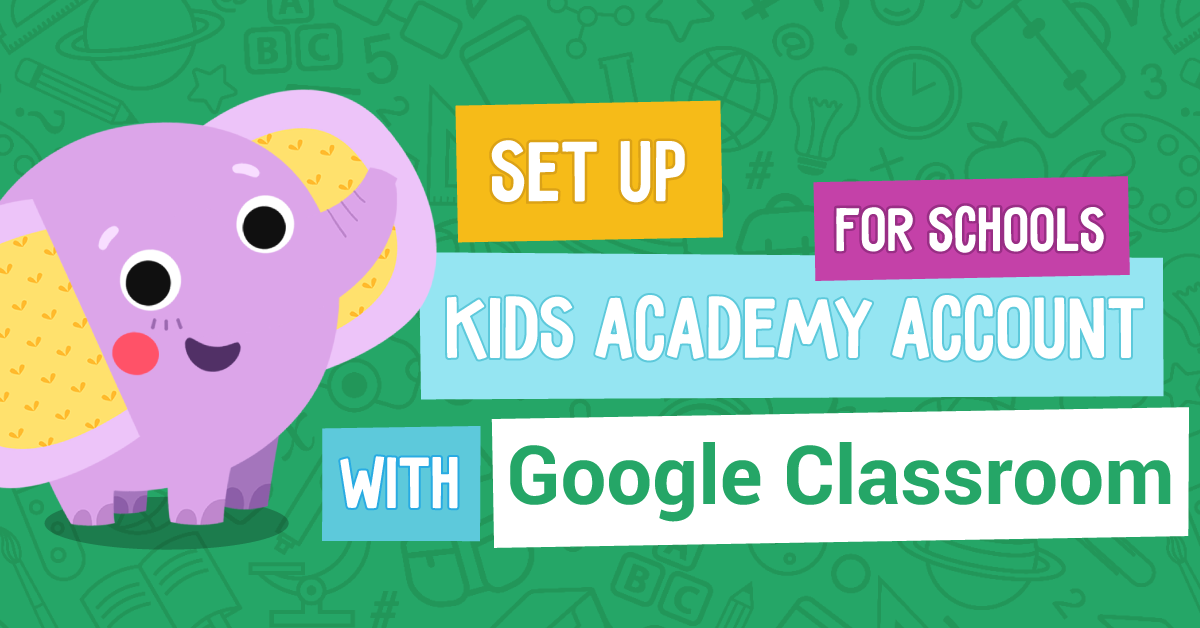Understanding chess rules Worksheets for Ages 6-7
7 filtered results
-
From - To
Introduce your child to the fascinating world of chess with our comprehensive "Understanding Chess Rules Worksheets for Ages 6-7". Designed to ignite a passion for strategic thinking, these worksheets guide young learners through the basics of chess rules, pieces, and moves. With engaging illustrations and easy-to-follow instructions, children will grasp essential concepts such as board setup, piece movement, and game objectives. Perfect for both beginners and young enthusiasts, these worksheets aim to enhance cognitive skills and foster a love for this classic game. Elevate your child's learning experience with Kids Academy, where chess becomes child's play!
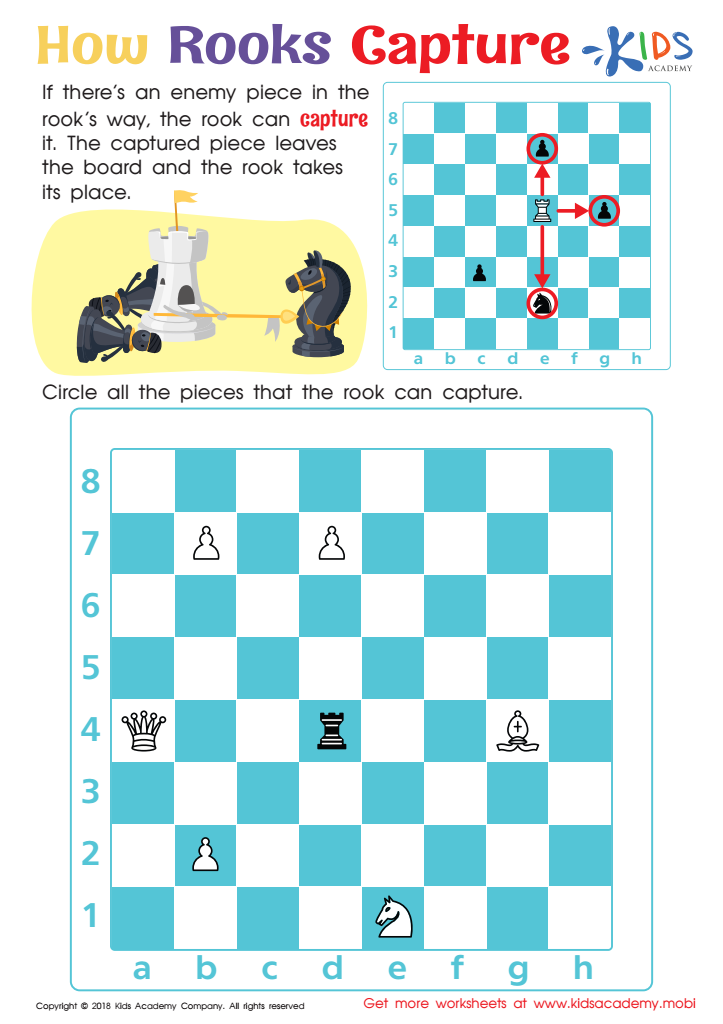

How Rooks Capture Worksheet
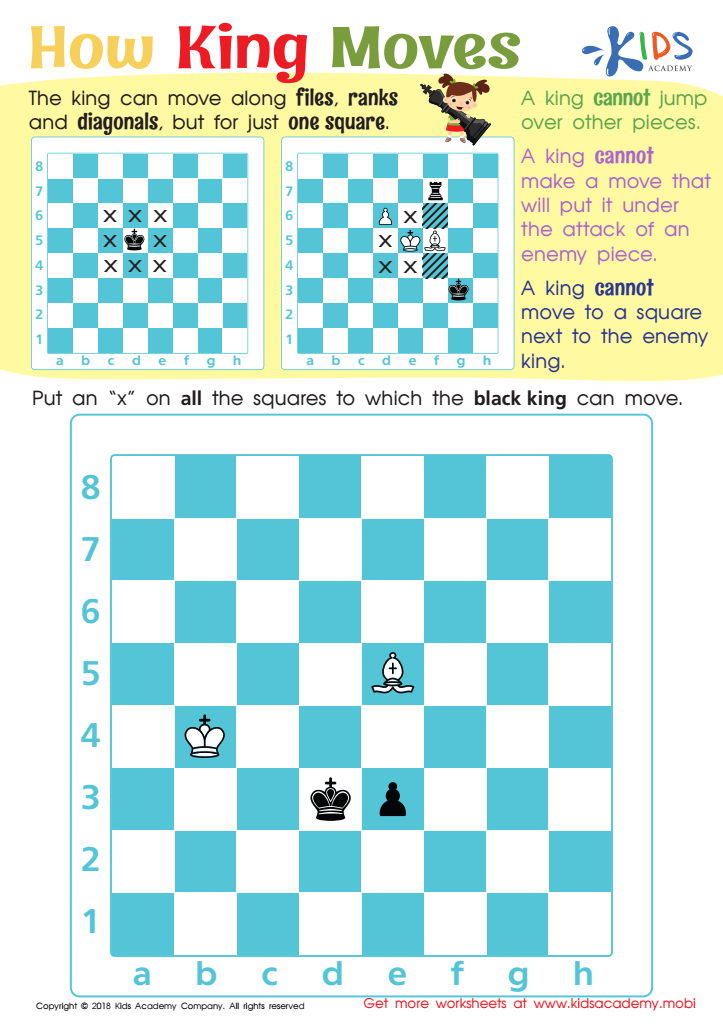

How King Moves Worksheet
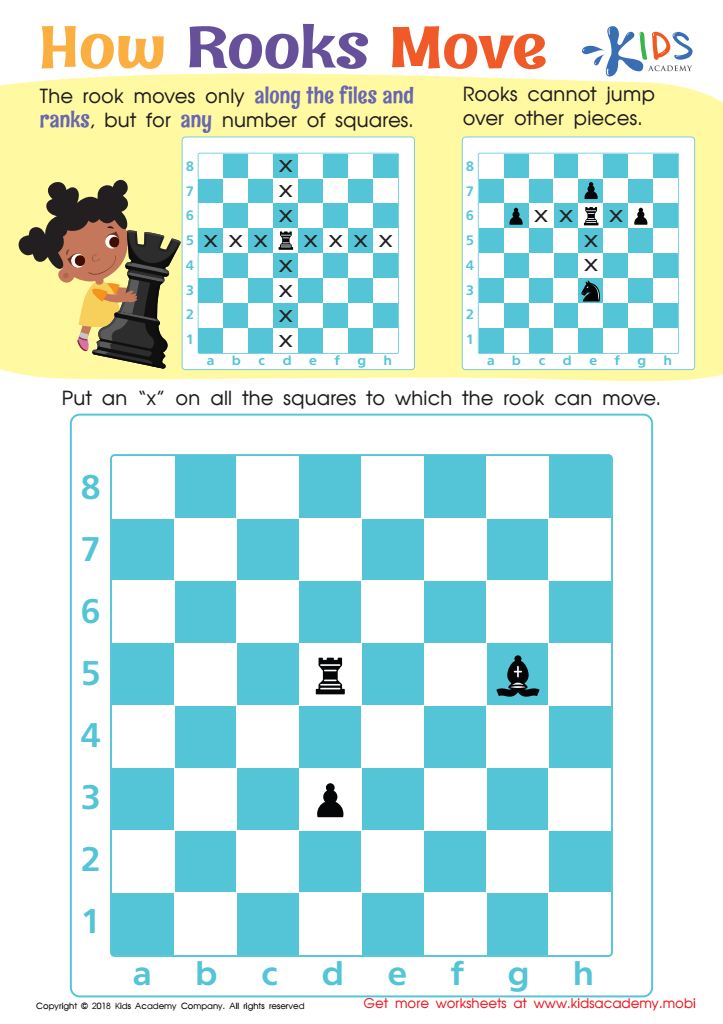

How Rooks Move Worksheet
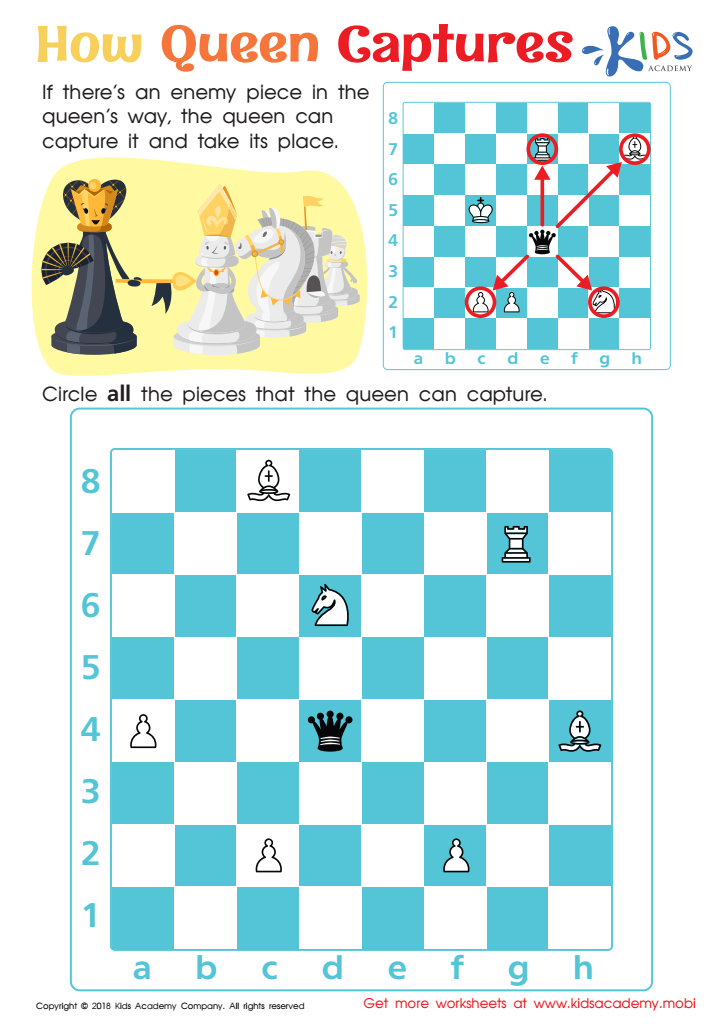

How Queen Captures Worksheet
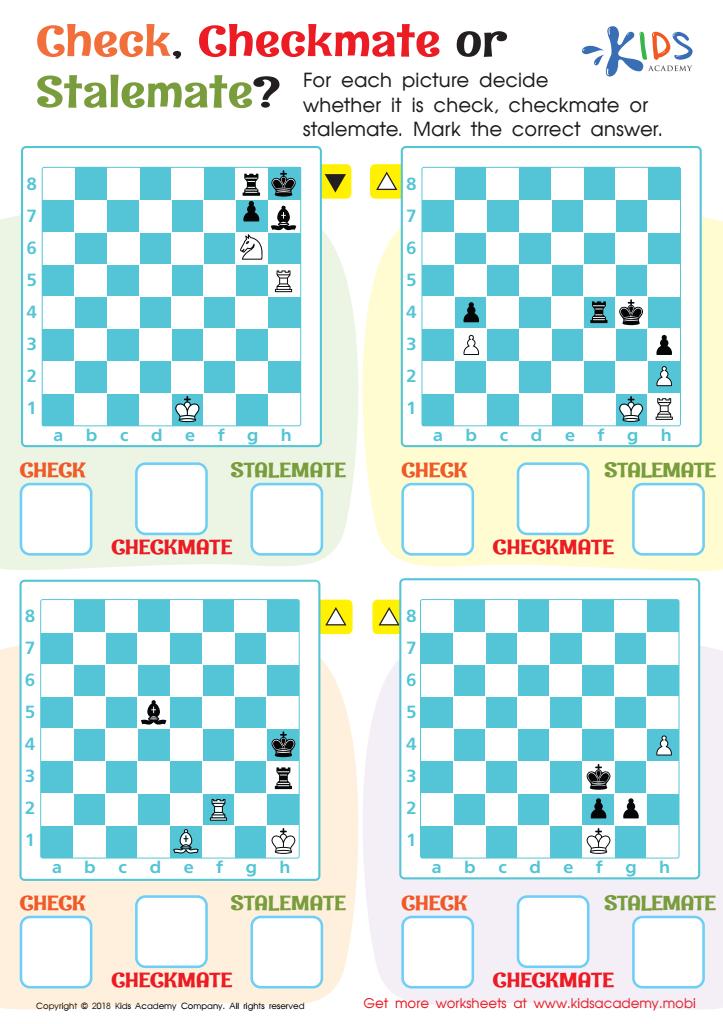

Check. Checkmate or Stalemate? Worksheet
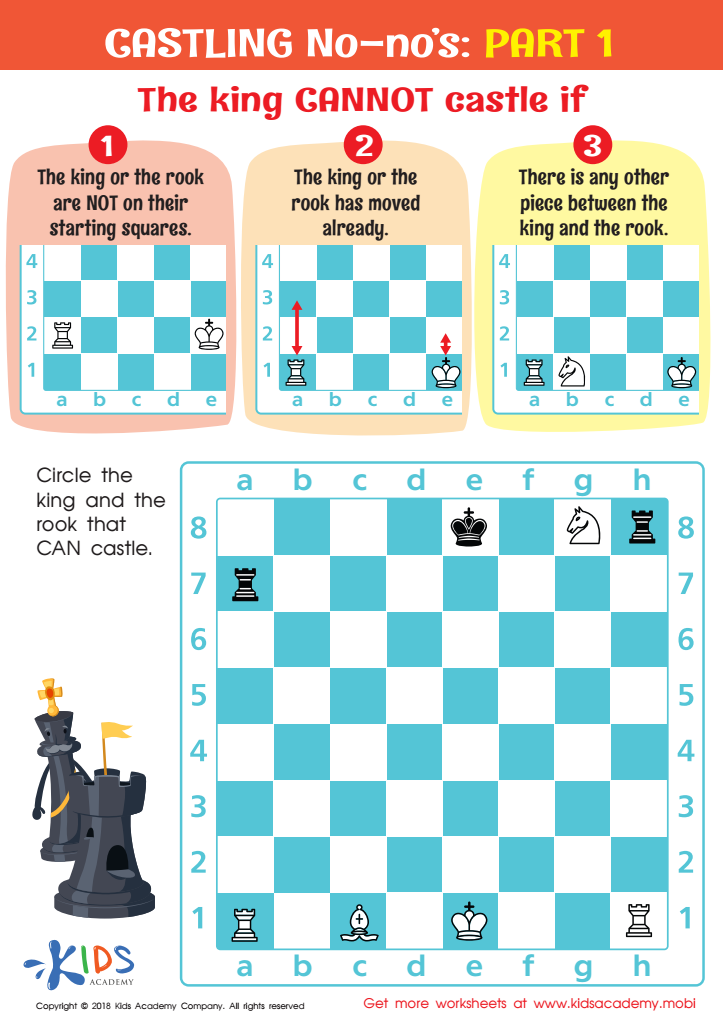

Castling No–no's: Part 1 Worksheet


How Pawns Capture Worksheet
Introducing children aged 6-7 to chess offers myriad benefits that go beyond just learning the game. At this impressionable age, children's cognitive, social, and emotional skills are rapidly developing, and chess serves as an excellent tool to foster these areas.
One primary benefit is the enhancement of cognitive abilities. Understanding chess rules and strategies demands critical thinking, problem-solving, and decision-making skills. These mental exercises can significantly help improve a child’s attention span, memory, and mathematical abilities. For instance, calculating moves ahead and evaluating different outcomes enhance a child's analytical thinking and planning capacity, which are essential academic skills.
Additionally, chess promotes emotional intelligence. Learning to win with grace and lose with dignity helps children develop resilience and patience. They learn the value of practice, persistence, and handling frustration, which are crucial life skills.
Socially, the game enables children to interact with peers, promoting communication and turn-taking. It advocates respect for others, regardless of the game’s outcome, encouraging sportsmanship and the building of friendships based on mutual interests.
For teachers and parents, introducing chess isn't just about learning a game; it's about nurturing a holistic developmental environment that melds fun with learning. By understanding the rules themselves, adults can guide children more effectively, making the learning process enjoyable and enriching.

 Assign to My Students
Assign to My Students





